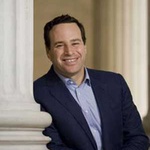
Protesters at a Trump rally in San Diego on May 27. Chad Zuber/Shutterstock.com
What Was So Shocking About Trump's Immigration Speech?
When the interests of citizens collide with those of illegal immigrants, federal agencies shoulder unfair burdens.
“Anyone who has entered the United States illegally is subject to deportation—that is what it means to have laws and to have a country.”
That line from Donald Trump’s immigration speech in Phoenix was tweeted out, highlighted in yellow marker, by Josh Schwerin, a spokesman for Hillary Clinton, with the shocked header: “Explicit line on deportation from Trump’s speech.”
If nothing else, Trump’s speech succeeded in forcing into full public view the underlying attitudes that have shaped not only the Clinton campaign’s immigration policy but the media coverage of the whole issue.
In her speech in Reno, Nevada, Hillary Clinton quoted a saying: “Tell me with whom you walk, and I will tell you who you are.” A professional politician, of all people, should appreciate the untruth of those words: It’s almost a job qualification to “walk with” people with whom you disagree in important ways. (I’m looking right now at a photo of President Clinton walking with Yasser Arafat, for example.) But the words could accurately be updated : “Tell me what shocks you, and I’ll tell you who you are.”
So let’s review the Donald Trump speech and pull out the lines that are supposed to be so shocking—and wonder together how immigration became the topic area where it is most offensive to tell manifest truths.
“Not everyone who seeks to join our country will be able to successfully assimilate.”
Whether we are measuring by economic success, criminal offenses, national security threats, or contributions to the arts and sciences—not all immigrants are equal. Not all immigration sources are equal either. Eighty-three percent of immigrants from India arrive with a college degree or higher, as compared to only 13 percent of immigrants from Latin America. These effects persist over two and three generations. Refugees from the communist crackdown in Hungary in 1956 have flourished in America. More than a quarter century after they began to arrive in America, Somali refugees have not. First-generation Japanese immigrants committed crimes at rates much lower than that of other Americans; Mexican immigrants have historically offended at elevated rates. Why is any of this surprising? Nobody who valued the protections of a welfare state would voluntarily migrate from France to the United States—but a person with a billion-dollar idea very well might. The opposite would be true from a country like Brazil.
“Most illegal immigrants are lower-skilled workers with less education who compete directly against vulnerable American workers, and that these illegal workers draw much more out from the system than they will ever pay in.”
Low-income workers in the United States receive much more in benefits and transfers than they pay in taxes, especially if they live past age 65. Upper-income people will pay much more than they receive. That’s how the system is designed in every advanced society. What it means, however, is that loose talk about needing immigrants to solve the problems of, for example, Medicare is like the old joke about losing money on every sale but trying to make it up on volume. Many of these redistributive programs are available to illegal immigrants too, especially the programs financed by state taxes. Illegal immigrants send their children to public schools. They use public clinics, roads, and prisons. They are eligible for per-child tax credits—and often receive the Earned Income Tax Credit. These are all exhaustively documented facts. Plans to put millions of illegal immigrants on a path to citizenship—and thus Social Security, Medicare, Medicaid, Section 8 housing, and so on—will cost billions more. Those costs don’t go away because proponents think it is somehow bad form to mention them.
“The central issue is not the needs of the 11 million illegal immigrants—or however many there may be. That has never been the central issue. It will never be the central issue.”
Here are some issues not discussed in Hillary Clinton’s immigration plan: How many immigrants should the United States take? Who should they be? What should be expected of them? How do we know whether U.S. immigration policy is succeeding or failing? Literally every point in her most public statement of herimmigration views deals with the interests of immigrants themselves, and especially of illegal immigrants.
Nobody would do banking policy that way, or any other area of public concern. But to test immigration policy against the interests first and foremost of Americans themselves? Well again: Tell me what you find shocking, and I’ll tell you who you are.
Image via Chad Zuber/Shutterstock.com.







